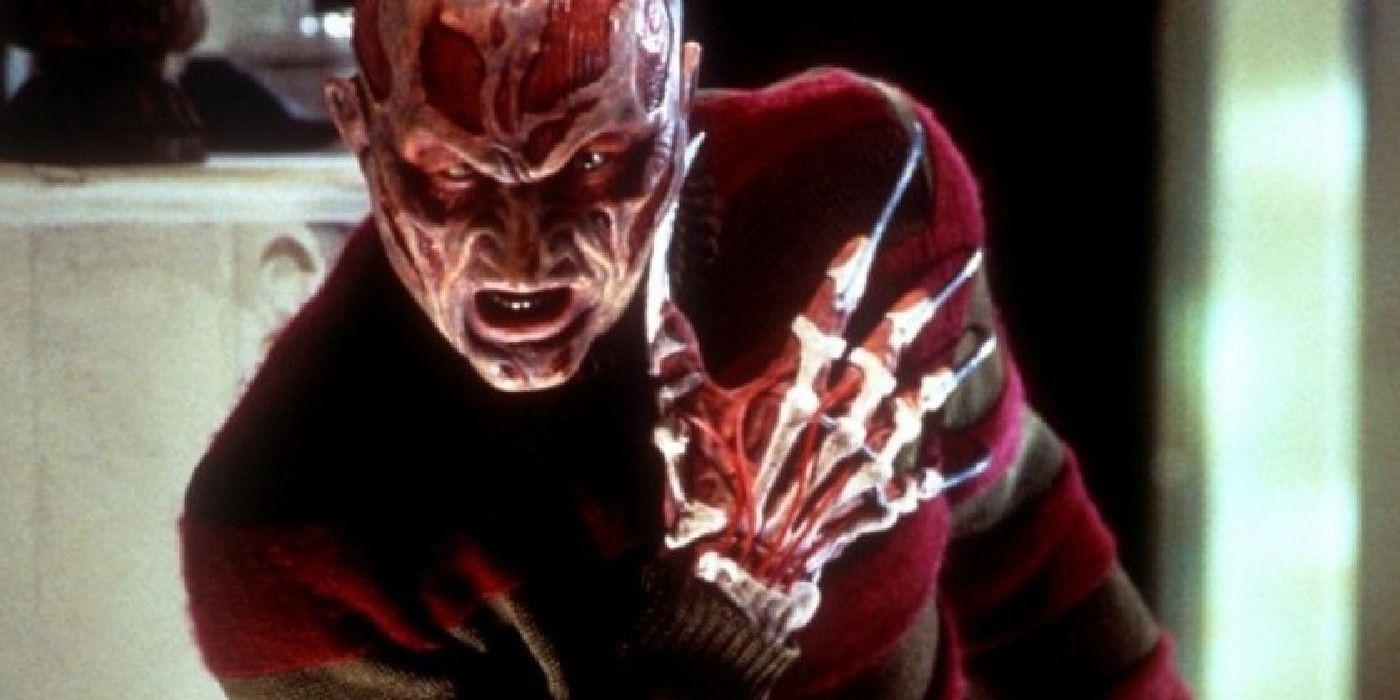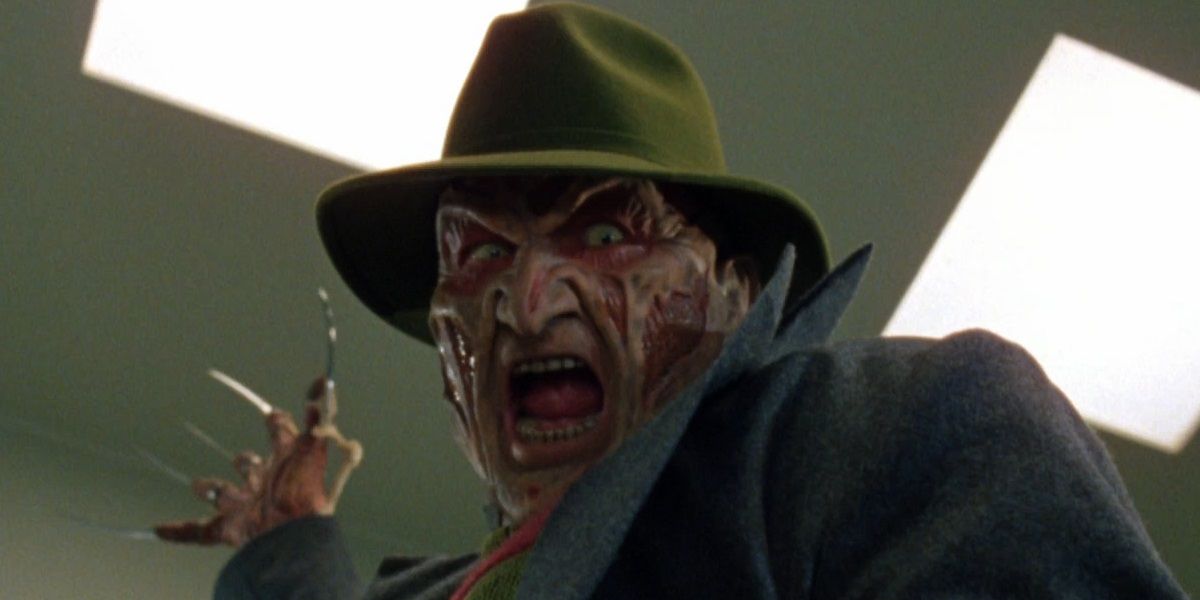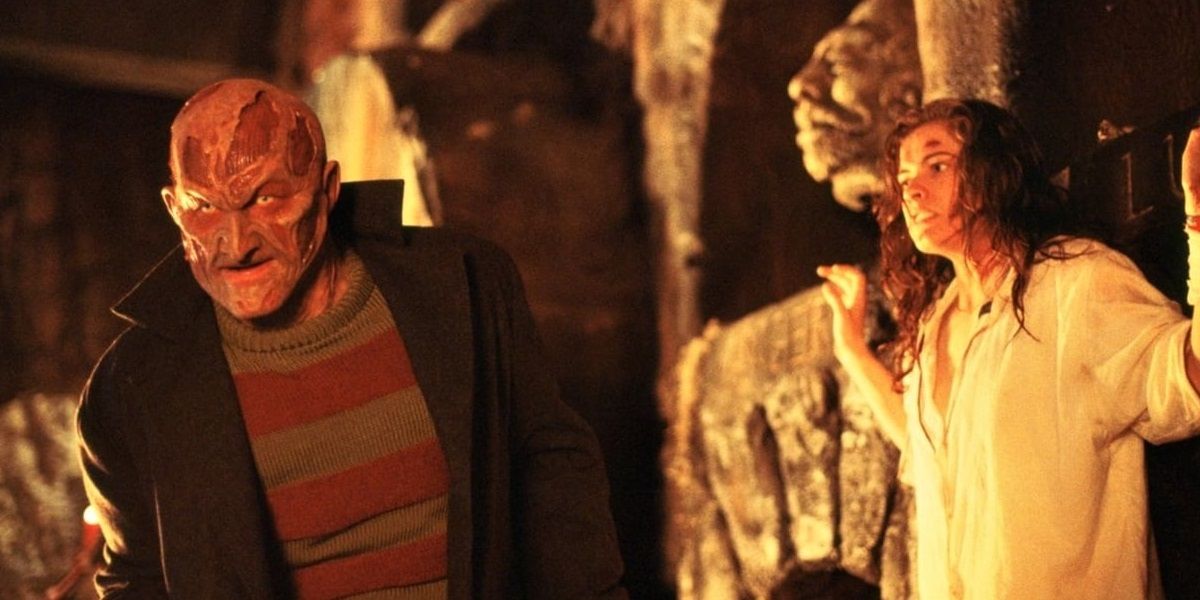Wes Craven's A Nightmare on Elm Street offered a new look at the slasher genre by creating a character that lived in a supernatural landscape to taunt its viewers. Freddy Krueger was an unprecedented addition as a cold-blooded specter of dreams who took visible enjoyment in the torment of teenagers. Craven later revolutionized the genre again with another Nightmare installment that used meta-horror to pinpoint the real-life horrors of fame. Wes Craven's New Nightmare wasn't afraid to dissect the horror genre in a way that was later perfected in his 1996 film, Scream.
New Nightmare was conceptualized when Freddy was no longer the haunting silhouette that lurked in the children's dreams on Elm Street. At that time, he had become more of a sarcastic villain who never ran short of clever puns when killing his victims. Outside of the films, Freddy had become an icon and household name for both kids and adults. His fame had stripped him of his fear factor, and Craven wanted to bring the character back to his roots.
The 1994 film followed Heather Langenkamp, the actress who played Nancy in the original film, as she lived her life in California, dealing with issues like stalkers and consistently being recognized for her time in the horror franchise. However, her life took a dark turn following the accidental death of her husband. Heather's first indication that things weren't as they seemed occurred when she identified claw marks on the chest of her husband's body. From there, the nightmares she'd been experiencing worsened as Freddy took on a more realistic presence in her life.
Craven explained that each Nightmare film was meant to keep a vengeful demon locked away. Since no new film had been released for some time, it was forced to express itself in the real world rather than in the film. Freddy saw Nancy as the person keeping him from escaping fully and decided to torment Heather as a way to weaken her before confronting her directly. The design for Freddy represented New Nightmare's maturity. Freddy's features were more angled, and he had an organic clawed hand along with a trenchcoat and hat. His new design perfectly displayed a creature trying its best to resemble something recognizable but still appearing vastly different from the source.
On the surface, it was clear New Nightmare brought to light that the franchise wasn't as scary as it used to be. Upon further inspection, the film also became a commentary on the real-life "nightmares" that Hollywood stars can face. For Heather, the constant threat of stalkers invading her home and harming her family was a genuine concern that Freddy exploited. However, for Craven, it was the constant demands to deliver a script for a franchise before a deadline took on an even deadlier persona. Rather than calling the wrath of studio executives for not delivering a script on time, Craven's struggles with delivering a story bring about evil personified through Freddy Krueger. The ideas seem on the nose on paper but, once executed in the film, are incredibly subtle and create a satire that hadn't yet been seen in the genre. Scream later expanded on this idea by calling out the predictability of horror as a whole.
Wes Craven's New Nightmare is still the only film in the franchise that dared to take an inward look at itself and use it to tell a totally fresh story that successfully injected fear back into Freddy Krueger. Scream took this idea to a whole new level and analyzed the slasher genre's tropes, using them to create a fun but still scary horror experience. While Scream launched the meta-horror film into the spotlight, the foundation was established in all of its nightmarish glory with Wes Craven's New Nightmare.



